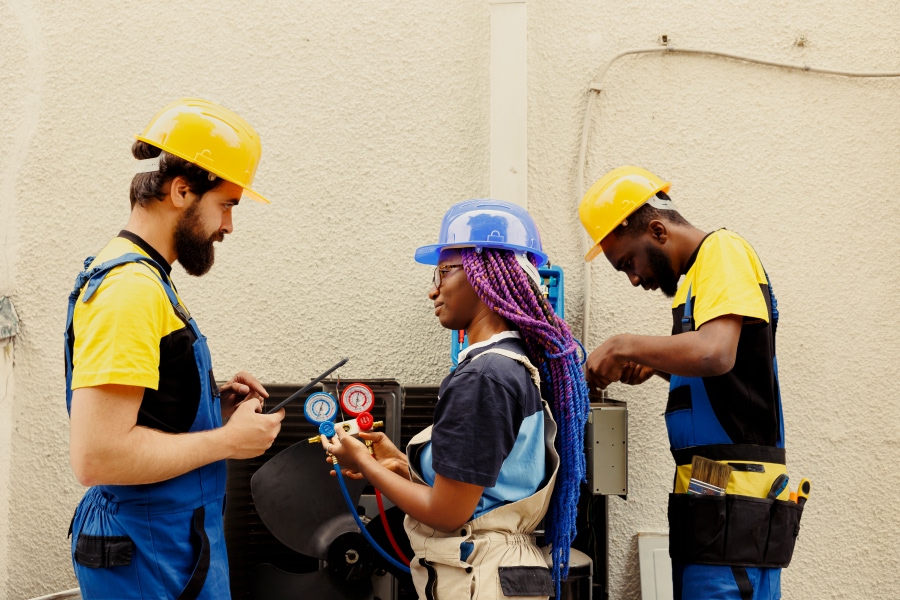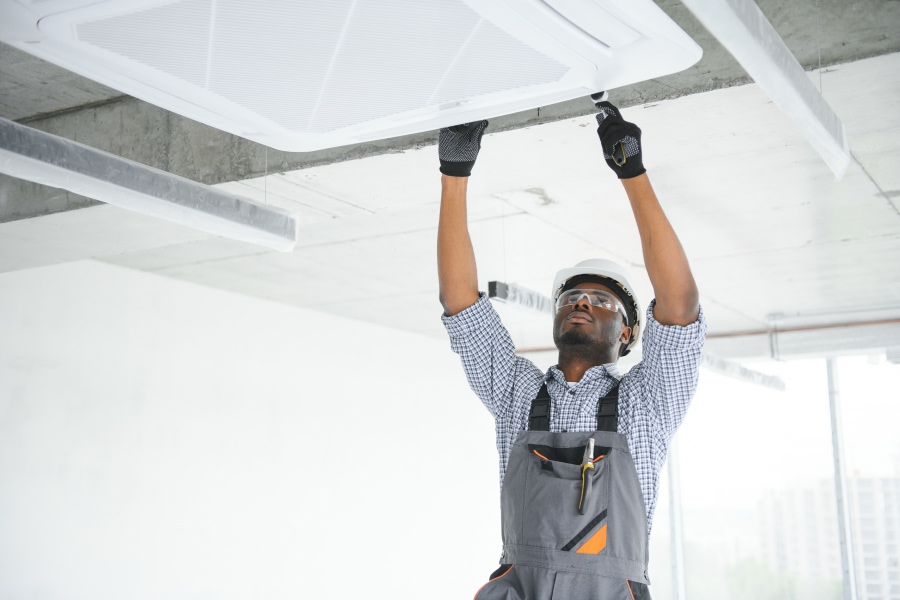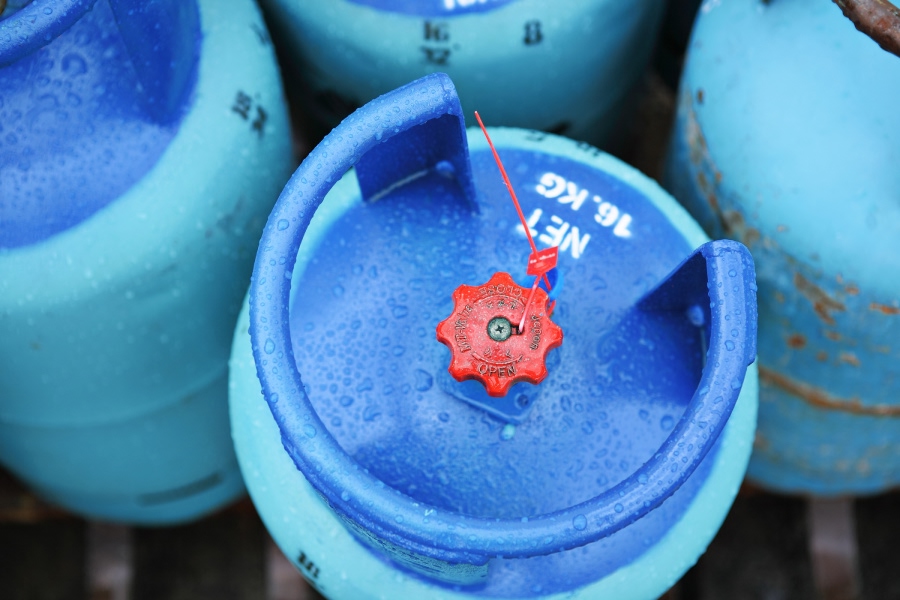Refrigerant handling is one of the most critical skills every HVAC technician must master. Whether you're just starting your HVAC career or looking to refresh your knowledge, understanding proper refrigerant handling and safety protocols isn't just about compliance—it's about protecting yourself, your customers, and the environment while building a successful career in the HVAC industry.
Why Refrigerant Safety Matters More Than Ever
The HVAC industry has undergone significant changes in recent years, particularly regarding refrigerant regulations and environmental concerns. With the phase-out of certain refrigerants and the introduction of newer, more environmentally friendly alternatives, technicians must stay current with proper handling procedures.
Improper refrigerant handling can result in serious consequences, including EPA fines, personal injury, environmental damage, and costly equipment failures. For new technicians entering the field, mastering these skills from the beginning sets the foundation for a successful and safe career.

Understanding Different Types of Refrigerants
Modern HVAC systems use various types of refrigerants, each with specific handling requirements and safety considerations.
Common Refrigerant Classifications
R-410A (Puron) is currently the most widely used refrigerant in residential and light commercial applications. It operates at higher pressures than older refrigerants, requiring specific safety precautions and properly rated equipment.
R-22 (Freon) is being phased out but is still found in many existing systems. While you can't install new R-22 systems, technicians frequently encounter these units during service calls and must know how to handle them safely.
R-32 and R-454B represent newer, lower Global Warming Potential (GWP) refrigerants that are becoming more common in residential applications. These refrigerants have unique handling characteristics that technicians must understand.
R-134a and R-1234yf are commonly found in automotive HVAC applications and some specialized commercial systems.
Each refrigerant type has specific pressure characteristics, temperature relationships, and safety considerations that affect how technicians should handle them during installation, service, and recovery operations.
EPA 608 Certification Requirements
Before handling refrigerants professionally, technicians must obtain EPA 608 certification. This certification demonstrates your knowledge of Clean Air Act requirements and proper refrigerant handling procedures.
Certification Types
Type I covers small appliances containing 5 pounds or less of refrigerant, such as household refrigerators and window air conditioners.
Type II covers high-pressure appliances like residential and commercial air conditioning systems and heat pumps.
Type III covers low-pressure appliances, primarily large commercial chillers.
Universal Certification combines all three types and is recommended for most HVAC technicians as it provides the broadest scope of work opportunities.
The certification process involves understanding refrigerant properties, recovery procedures, leak detection methods, and environmental regulations. Many successful HVAC professionals recommend getting your Universal 608 certification early in your career to maximize job opportunities.
Essential Safety Equipment and Personal Protective Equipment (PPE)
Proper safety equipment is non-negotiable when working with refrigerants. Refrigerants can cause serious injury if they come into contact with skin or eyes, and some can displace oxygen in confined spaces.
Required PPE
Safety glasses or goggles protect your eyes from refrigerant splashes and debris. Regular prescription glasses don't provide adequate protection from liquid refrigerant.
Chemical-resistant gloves prevent skin contact with refrigerants, which can cause severe frostbite-like injuries. Nitrile or neoprene gloves work well for most refrigerant types.
Long-sleeved shirts and long pants provide additional skin protection. Avoid synthetic materials that might melt if exposed to hot refrigerant lines.
Safety shoes with slip-resistant soles help prevent falls, especially when working on rooftops or in mechanical rooms where refrigerant leaks might create slippery conditions.

Detection and Monitoring Equipment
Electronic refrigerant detectors help identify leaks quickly and accurately. Different detector types work better with specific refrigerant families, so understanding your equipment's capabilities is crucial.
Digital manifold gauges provide accurate pressure readings and often include additional features like superheat and subcooling calculations.
Nitrogen regulators and hoses are essential for pressure testing and purging systems safely.
Safe Refrigerant Handling Procedures
Proper refrigerant handling begins before you even open your tool bag. Every service call involving refrigerant work requires careful planning and systematic execution.
Pre-Work Safety Assessment
Before beginning any refrigerant work, assess the work environment for potential hazards. Check for adequate ventilation, especially in confined spaces where refrigerant vapor accumulation could displace oxygen. Identify emergency exits and ensure you have clear communication with other team members.
Review the system's refrigerant type and quantity. Larger systems require additional safety precautions and may need specialized recovery equipment. Always verify the refrigerant type using proper identification methods rather than assuming based on system age or appearance.
Recovery Procedures
Refrigerant recovery is required by law for most service and replacement work. Proper recovery protects the environment and allows for refrigerant recycling or reclamation.
Start by connecting recovery equipment using proper hose management techniques. Ensure all connections are tight and secure before starting the recovery process. Monitor pressures throughout the recovery process and never attempt to speed up recovery by adding heat to the system.
During recovery, maintain proper ventilation and monitor for leaks. If you detect refrigerant odors or your leak detector alarms, stop the process immediately and investigate the source.
Charging and System Startup
When adding refrigerant to a system, always follow manufacturer specifications for refrigerant type and quantity. Overcharging can damage equipment and reduce efficiency, while undercharging leads to poor performance and potential compressor damage.
Charge liquid refrigerant into the high-pressure side when the system is off, and vapor into the low-pressure side during operation. Never charge liquid refrigerant into a running compressor's suction line, as this can cause severe compressor damage.
Monitor system pressures and temperatures during startup to ensure proper operation. Document all work performed, including refrigerant quantities added or removed, for regulatory compliance and customer records.
Leak Detection and Repair Best Practices
Effective leak detection requires systematic approaches and proper equipment. Small leaks can be difficult to locate but cause ongoing problems for customers and environmental concerns.
Detection Methods
Electronic detectors offer high sensitivity and can locate very small leaks. Different detector technologies work better with specific refrigerant types, so understanding your equipment's capabilities improves detection accuracy.
Soap bubble solutions provide visual confirmation of leak locations and work well for verifying electronic detector findings. Use commercial leak detection solutions rather than household soap, which can cause system contamination.
Ultraviolet dye systems help locate intermittent leaks or leaks in hard-to-reach locations. However, dye systems require proper UV lighting and may not be suitable for all refrigerant types.
Repair Considerations
When repairing leaks, consider the overall system condition and age. Sometimes multiple small leaks indicate systemic problems that might be more cost-effectively addressed through component replacement rather than individual leak repairs.
Always verify repairs using appropriate leak detection methods before recharging the system. A leak that seems repaired might still be present under different pressure or temperature conditions.
Environmental and Regulatory Compliance
Refrigerant handling regulations exist to protect both the environment and public health. Understanding these requirements helps avoid costly violations and supports professional credibility.

Venting Prohibitions
The Clean Air Act prohibits intentional venting of most refrigerants to the atmosphere. This includes releasing refrigerant during service, repair, or disposal operations. Even small amounts of refrigerant must be properly recovered.
Record Keeping Requirements
Maintain detailed records of all refrigerant handling activities. These records should include dates, refrigerant types and quantities, system information, and technician certification numbers. Proper documentation protects both you and your employer in case of regulatory inspections.
Disposal and Reclamation
Used refrigerant must be properly disposed of through certified reclamation facilities or reused in appropriate applications. Never mix different refrigerant types, as this contamination makes reclamation impossible and creates disposal challenges.
Advanced Safety Considerations
Experienced technicians understand that refrigerant safety goes beyond basic handling procedures. Advanced safety awareness helps prevent accidents and builds professional expertise.
Working in Confined Spaces
Refrigerant vapors are heavier than air and can accumulate in low areas, potentially displacing oxygen. When working in basements, mechanical rooms, or other confined spaces, ensure adequate ventilation and consider using personal gas monitors.
High-Pressure System Considerations
Newer refrigerants often operate at higher pressures than older systems. R-410A systems, for example, operate at significantly higher pressures than R-22 systems. This requires pressure-rated hoses, fittings, and gauges designed for high-pressure applications.
Emergency Procedures
Develop and practice emergency procedures for refrigerant exposure incidents. Know the location of emergency eyewash stations and safety showers. Understand the symptoms of refrigerant inhalation and have emergency contact information readily available.
Building Your Refrigerant Handling Expertise
Mastering refrigerant handling and safety protocols takes time and practice. The combination of classroom learning and hands-on experience provides the best foundation for developing these critical skills.
Formal HVAC training programs provide structured learning environments where you can practice refrigerant handling techniques under expert supervision. This approach helps build confidence while ensuring you learn proper procedures from the beginning.
Many successful HVAC technicians emphasize the importance of starting with solid fundamentals rather than trying to learn on the job. Proper training helps avoid costly mistakes and safety incidents that can damage both equipment and professional reputations.
As refrigerant regulations continue to evolve and new technologies emerge, ongoing education remains essential for career success. The HVAC industry rewards technicians who stay current with changing requirements and maintain high safety standards throughout their careers.
Conclusion
Refrigerant handling and safety protocols represent fundamental skills that every successful HVAC technician must master. From understanding different refrigerant types and EPA certification requirements to implementing proper safety procedures and emergency protocols, these skills form the foundation of professional HVAC work.
The investment in proper training and safety education pays dividends throughout your career in terms of job opportunities, professional credibility, and personal safety. Whether you're just beginning your HVAC journey or looking to advance your existing skills, mastering refrigerant handling techniques opens doors to more complex and rewarding work in the growing HVAC industry.
Remember that refrigerant safety isn't just about following regulations—it's about protecting yourself, your coworkers, your customers, and the environment while building a successful and sustainable career in one of today's most in-demand technical fields.
Whether you're just beginning your HVAC journey or looking to advance your existing skills, now is the perfect time to explore comprehensive HVAC training programs that will give you the foundation needed for long-term success in this growing industry.
